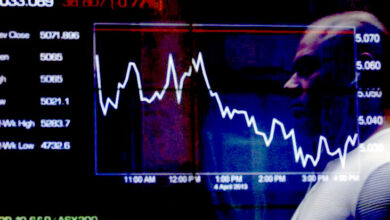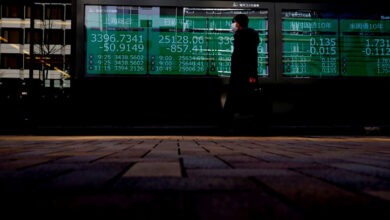The Australian dollar falls after the RBA; rising US yields put pressure on the yen.

Tokyo (Reuters) – Australia’s dollar lost its early gains on Tuesday after the country’s Reserve Bank raised interest rates by a half point as expected but did not give the hawkish outlook that some had hoped for.
Due to a rise in U.S. Treasury yields, the yen fell against the dollar and got close to its lowest level in 24 years. The euro, on the other hand, moved up and got further away from its five-year lows.
The Australian dollar fell 0.09 percent to $0.6820 after reaching a high of $0.6895 earlier in the day.
Both traders and analysts thought that the rate would go up by 50 basis points for the second time in a row on Tuesday. Governor Philip Lowe had said before the meeting that the choice would be between a quarter-point and a half-point increase. However, the 75 basis-point increase made by the U.S. Federal Reserve last month has led to rumours that the RBA might need to be more aggressive.
“We got a small dip in the Aussie because the statement seems to confirm that if the RBA board did discuss an option other than the 50 basis points we got, it was the 25 basis points that Governor Lowe mentioned a couple of weeks ago and not the 75 basis points,” said Westpac strategist Sean Callow.
“No FOMC-style change at the last minute to more aggressive tightening.”
The 10-year Treasury yield rose to 2.9780% in Tokyo on Tuesday, after falling to 2.7910 percent on Friday, its lowest level since May. This helped the US dollar’s 0.4% rise to 136.23 yen.
On Monday, there was no trading in Treasuries because U.S. markets were closed for the Fourth of July holiday. There was also less trading in currency markets because of the holiday.
The dollar index, which compares the dollar with six major currencies, was about flat at 105.15. It was mostly the same on Monday, too.
It reached a high of 105.64 on Friday, which was close to the 20-year high of 105.79, which was reached in mid-June.
The most important part of the index, the euro, went up 0.15 percent to $1.0436 after ending Monday about flat. It has been hitting a floor at around $1.035 for the past two months, which is a level it hasn’t been at since the beginning of 2017.
Overnight, the euro was helped by a rise in regional yields. This happened after Bundesbank chief Joachim Nagel said that the European Central Bank (ECB) would quickly stop being so friendly and that a more restrictive policy might be needed to reach the inflation target.
This month, the ECB is getting ready to raise interest rates for the first time in ten years.
In a note to clients, Tapas Strickland, a market economist at National Australia Bank (OTC: NABZY), wrote in a note that the policy outlook might not support the euro in the long run.
He said, “Europe is still stuck between the Russia-Ukraine crisis and a weakening global economy.”
“Given how bad things are in Europe, it’s hard to imagine a long-lasting euro rally, which could make USD strength last longer.”





